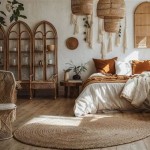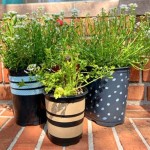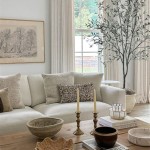Coffee Room Decor: Creating an Inviting and Functional Space
Coffee rooms, whether in offices, homes, or commercial establishments, serve as vital hubs for socialization and rejuvenation. The decor of these spaces plays a significant role in shaping the overall atmosphere and user experience. A thoughtfully designed coffee room can foster productivity, encourage interaction, and provide a welcome respite from daily routines.
The foundational element of any successful coffee room design is functionality. Prioritizing efficient workflow and user convenience should be the primary focus. This entails considering the placement of essential appliances like coffee machines, refrigerators, and microwaves. Ample counter space should be provided for food preparation and serving. Storage solutions for coffee supplies, cups, and cutlery are also crucial. Easy access to water sources and waste disposal units further enhances functionality.
Creating a visually appealing ambiance is equally important in coffee room design. The selection of colors, textures, and lighting can significantly impact the overall mood. Neutral color palettes, such as shades of gray, beige, or white, create a clean and modern backdrop. Accent colors can be introduced through artwork, furniture, or decorative elements. Natural light is highly desirable, and if limited, supplemental lighting should be strategically placed to ensure adequate illumination. The use of warm-toned lighting can create a more inviting and relaxing atmosphere.
Furniture choices play a crucial role in defining the comfort and style of a coffee room. Comfortable seating arrangements should be provided to accommodate various needs, from quick coffee breaks to informal meetings. Options might include bar stools, armchairs, sofas, or benches. Durable and easy-to-clean materials are recommended for both furniture and flooring. Consider incorporating a mix of seating heights and styles to cater to different preferences.
Introducing elements of biophilic design can enhance the overall well-being of users. Incorporating plants, natural materials, and views of nature can create a calming and restorative environment. Plants not only add aesthetic value but also improve air quality. Natural materials like wood and stone can add warmth and texture to the space. If access to natural views is limited, consider incorporating nature-inspired artwork or wall murals.
Artwork and decorative accents can personalize the coffee room and reflect the company culture or homeowner's style. Wall art, sculptures, or decorative objects can add visual interest and create a more stimulating environment. Consider incorporating elements that reflect the local community or the company's values. A well-curated selection of artwork can spark conversation and foster a sense of community.
Technology integration can further enhance the functionality and convenience of the coffee room. Providing access to Wi-Fi, charging stations, and smart appliances can cater to the needs of a modern workforce. Interactive displays can be used to communicate important information or provide entertainment. Integrated sound systems can create a pleasant auditory backdrop.
Maintaining cleanliness and organization is crucial for a positive coffee room experience. Clearly designated areas for waste disposal and recycling encourage responsible behavior. Regular cleaning schedules ensure a hygienic and pleasant environment. Providing adequate storage solutions helps minimize clutter and maintain a tidy appearance. Easy-to-clean surfaces and materials simplify maintenance tasks.
Accessibility should be a primary consideration in coffee room design. Ensuring that the space is accessible to individuals with disabilities is essential. This includes providing wheelchair-accessible pathways, countertops, and seating arrangements. Consider incorporating features such as automatic door openers and accessible appliances.
Budget considerations are an integral part of any design project. Establishing a realistic budget early in the planning process helps guide decision-making. Prioritizing essential features and exploring cost-effective alternatives can help maximize the budget. Consider repurposing existing furniture or sourcing materials from local suppliers to minimize costs.
Regularly assessing the effectiveness of the coffee room design is crucial for continuous improvement. Gathering feedback from users can provide valuable insights into areas for enhancement. Monitoring usage patterns can identify areas of high traffic or underutilization. Periodically updating the decor and layout can maintain a fresh and engaging environment.
Sustainability should be a guiding principle in coffee room design. Incorporating energy-efficient appliances, water-saving fixtures, and sustainable materials minimizes environmental impact. Promoting waste reduction through recycling and composting programs further contributes to sustainability efforts. Choosing durable and long-lasting materials reduces the need for frequent replacements.
The design of a coffee room should reflect the specific needs and preferences of its users. Whether it's a bustling office environment or a cozy home setting, a well-designed coffee room can serve as a valuable space for relaxation, interaction, and rejuvenation. By carefully considering the elements of functionality, aesthetics, and sustainability, one can create a coffee room that enhances the overall experience for everyone.

50 Cool Coffee Interior Decor Ideas S

20 Mind Blowing Diy Coffee Bar Ideas And Organization That Will Blow Your Cuethat S Interior Cafe Design

Coffee Interior Design Service 3

50 Cool Coffee Interior Decor Ideas Digsdigs

Coffee Interior

Rustic Coffee Table Designs For Your Home Designcafe

6 Unique Coffee Decoration Ideas Styles Sena Home Furniture Blog

15 Café Interior Design Ideas To Lure Customers Cafe Coffee Decor

How To Create A Coffee Atmosphere At Home

Buy White Marble Center Coffee Table With Black Legs For Home Decor Living Room And Office Ikiru







